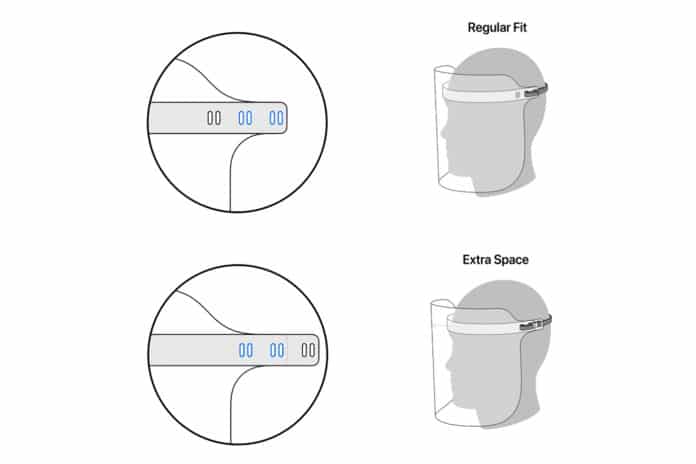Apple is expanding its activities to combat the coronavirus pandemic. Together with suppliers, they have designed a face shield for medical personnel and started mass production, as Apple CEO Tim Cook said via Twitter on Sunday.
Now, Apple has added new support pages to its website that explains how to assemble, use, and clean the Face Shields it produces for frontline healthcare workers who fight COVID-19.
The Face Shield is made from synthetic plastic, can be worn on all sizes of heads, and takes only 2 minutes to assemble. It is designed to be able to deliver 100 flat items per box.
The directions seem pretty easy to follow. According to the instructions, the slots on the headband are aligned with similar versions on the Face Shield, depending on the size of the user’s head. The silicone strap is then inserted into the slots of the Face Shield and the frontal band, so that it can be easily adjusted, with the strap going behind the user’s head.
To reuse and clean the Face Shield, Apple recommends avoiding exposing the item to high heat and handling it gently to prevent drops and scratches. For sterilization, Apple declares that it is rated to be compatible with chemical cleaners containing 70% ethanol, 70% isopropyl alcohol, 6% bleach, or 3% hydrogen peroxide, although bleach may leave a residue on the face shield.
Additional help is provided in the form of a video tutorial that shows workers how to properly fit their masks.
Initially, Apple has delivered the first Face Shield to Kaiser Hospital in Santa Clara Valley, USA, and received positive feedback. Cook said in the video on Twitter that the company planned to deliver more than 1 million Apple-designed Face Shields by the end of this week. And will ship at least 1 million more per week, emphasizing that Apple is working with governments and medical professionals to send Face Shield to the most urgent medical institutions.
At this time, Face Shields are only available to medical personnel in the United States, where they are most needed, but will be shipped to other countries as soon as possible.
